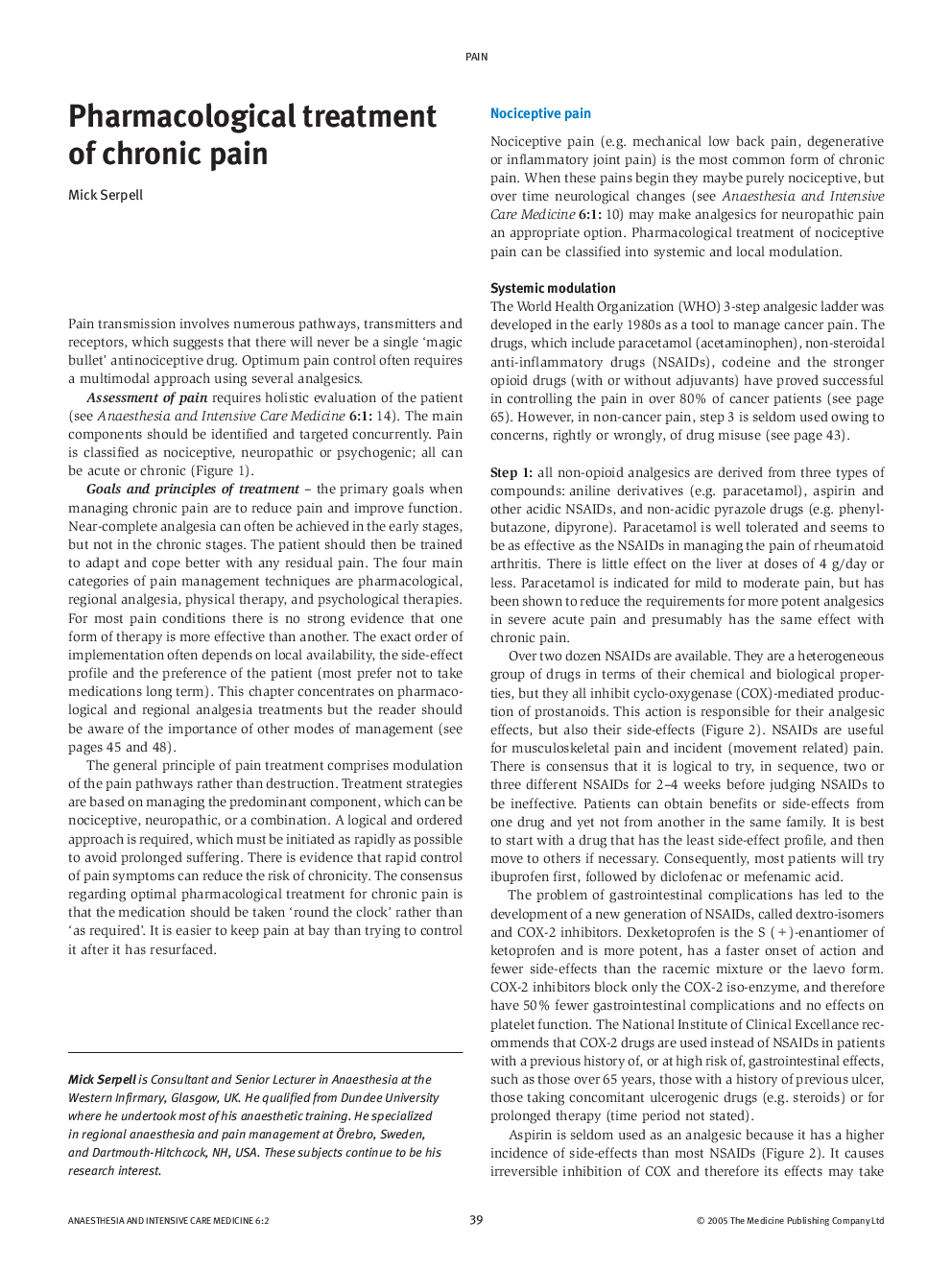| Article ID | Journal | Published Year | Pages | File Type |
|---|---|---|---|---|
| 9089697 | Anaesthesia & Intensive Care Medicine | 2005 | 4 Pages |
Abstract
The optimal pharmacological treatment for chronic pain is that the medication should be taken 'round the clock' rather than 'as required'. It is easier to keep pain at bay rather than trying to control it after it has resurfaced. The World Health Organization (WHO) 3-step analgesic ladder has proved successful in controlling over 80% of cancer pain. It is also appropriate for non-malignant nociceptive pain and uses conventional analgesic drugs. The drugs used in Step 1 are paracetamol (acetaminophen), non-steroidal anti-inflammatory drugs (NSAIDs) and cyclo-oxygenase II inhibitors (COX II). Codeine and other opioids are used for moderate pain in Step 2, and the potent opioid drugs, such as morphine, are used in Step 3. Local modulation uses the local application of transcutaneous electrical nerve stimulation (TENS), acupuncture or regional analgesic block by injection into tissue or around nerves using local anaesthetics, opioids, steroids, alpha 2 agonists (e.g. clonidine) and/or NMDA antagonists (e.g. ketamine). For neuropathic pain, adjuvant drugs such as antidepressants, anticonvulsants and antiarrhythmics are more effective. The antidepressant amitriptyline is the gold standard. Adjuvant analgesics appear to work by potentiating the dorsal inhibitory pathways of the spinal cord or stabilizing excitable neural fibres.
Related Topics
Health Sciences
Medicine and Dentistry
Anesthesiology and Pain Medicine
Authors
Mick Serpell,
